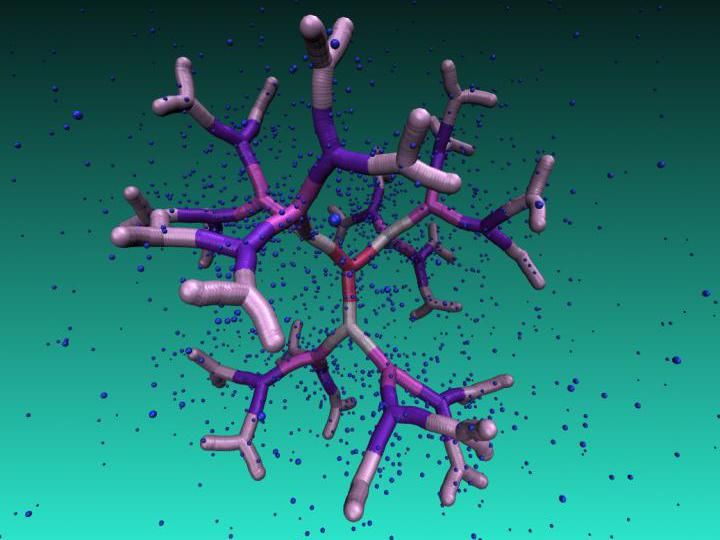RNA modification important for brain function
Researchers at the Institute of molecular biology (IMB) and Johannes Gutenberg University Mainz (JGU) in Germany have shown that a new way of regulating genes is vital for the activity of the nervous system.
Researchers at the Institute of Molecular Biology (IMB) and Johannes Gutenberg University Mainz (JGU) in Germany have shown that a new way of regulating genes is vital for the activity of the nervous system. They found that this form of regulation, a chemical modification on RNA called m6A, is also important in influencing whether flies become male or female. This study clearly shows that RNA modifications play an important role.
In their study the scientists show that the m6A RNA modification occurs at high levels in the developing fly’s nervous system and that it is important for this system to function. When they disrupted the molecular pathway that modifies the RNA, the flies behaved abnormally: they had problems folding their wings correctly, could not orientate themselves anymore, and moved more slowly than flies whose RNA modifications were normal. The effect on locomotion results from an impaired function of the brain. The researchers also show that m6A is important to fine-tune sex determination, i.e., whether a fly develops as male or female.
Dr. Jean-Yves Roignant, a group leader at IMB and corresponding author on the study, says, “The discovery that RNA modifications are so abundant on messenger RNAs was not anticipated until a few years ago and to my view this is one of the most exciting discoveries in the field in the last 15 years. Our study now sheds light on what they do in living organisms. We show that the m6A modification plays an important role in the function of the nervous system and in sex determination in the fruit fly, Drosophila. As this modification is also enriched in the vertebrate nervous system, it is conceivable that it has similar roles in humans.”
In order for our bodies to function normally, it is important for genes to be turned on or off in the right cells at the right times. It is already well established that DNA modifications are important to regulate the activity of genes. These molecular marks on the DNA act as signals to the cell machinery that converts the information contained within a gene into a protein, and help determine how a particular gene is regulated. These signals can be added and removed, which changes whether genes are active or inactive. Many different modifications have also been identified on RNA, but what they do in vivo was not well understood. m6A is the most prevalent of these RNA modifications, and scientists have shown that it can be added and removed in an analogous way to DNA modifications. The present publication is the first comprehensive study investigating the role of all components involved in the biogenesis of the m6A RNA modification in a multicellular organism.
Besides finding an important role for m6A in embryonic development, Dr. Jean-Yves Roignant and his team also identified a new component of the molecular machinery that regulates this RNA modification – Spenito. They next intend to investigate how this machinery works in more detail.
Tina Lence, a PhD student in the Roignant lab at IMB and first author of the paper, says, “Now we have found that m6A is there and that it is important for neuronal functions, we want to understand more about its precise role. For example, is m6A important in all circumstances, or is it more involved in the fine-tuning of gene expression or in response to changes in the environment?”
This emerging field of RNA modifications, also called epitranscriptomics, is likely to yield many more exciting findings in the future.
Original publication
Most read news
Original publication
Tina Lence, Junaid Akhtar, Marc Bayer, Katharina Schmid, Laura Spindler, Cheuk Hei Ho, Nastasja Kreim, Miguel A. Andrade-Navarro, Burkhard Poeck, Mark Helm & Jean-Yves Roignant; "m6A modulates neuronal functions and sex determination in Drosophila"; Nature; 2016
Topics
Organizations
Other news from the department science

Get the life science industry in your inbox
By submitting this form you agree that LUMITOS AG will send you the newsletter(s) selected above by email. Your data will not be passed on to third parties. Your data will be stored and processed in accordance with our data protection regulations. LUMITOS may contact you by email for the purpose of advertising or market and opinion surveys. You can revoke your consent at any time without giving reasons to LUMITOS AG, Ernst-Augustin-Str. 2, 12489 Berlin, Germany or by e-mail at revoke@lumitos.com with effect for the future. In addition, each email contains a link to unsubscribe from the corresponding newsletter.
Most read news
More news from our other portals
Last viewed contents
Sissyphobia:_Gay_Men_and_Effeminate_Behavior

"Form is function" - Liquid-like tissue behavior is a key principle for the formation of structures in biological systems
Mutation
Nearly_neutral_theory_of_molecular_evolution
Strangles
Operon

Nanocages in the lab and in the computer - How DNA-based dendrimers transport nanoparticles
Bird-safe

Making sense of the data jungle - A research team develops a tool for visualizing single-cell data
Candesartan






















































